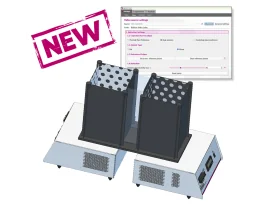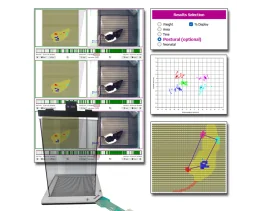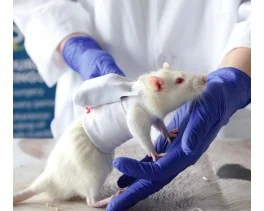Authors
J. Pachlopnik Schmid, C.-H. Ho, J. Diana, G. Pivert, A. Lehuen et al.
Lab
Institut National de la Santé et de la Recherche Médicale U768, Laboratoire du Développement Normal et Pathologique du Système Immunitaire, Paris, France ; Faculté de Médecine de l'université René Descartes, Institut Fédératif de Recherche Necker Enfants-
Journal
European Journal of Immunology
Abstract
Griscelli syndrome type 2 is caused by mutations in the RAB27A gene and is a rare and potentially fatal immune disorder associated with hemophagocytic lymphohistiocytosis (HLH). Animal models could provide assistance for better understanding the mechanisms and finding new treatments. Rab27a-deficient (ashen) mice do not spontaneously develop HLH. When injected with lymphocytic choriomeningitis virus (LCMV) strain WE, Rab27a-deficient C57BL/6 mice developed wasting disease, hypothermia, splenomegaly, cytopenia (anemia, neutropenia and thrombocytopenia), hypertriglyceridemia and increased levels of IFN-_, TNF-_, GM-CSF, IL-12, CCL5 and IL-10. Activated macrophages with hemophagocytosis were found in liver sections of these mice. Compared with perforin-deficient mice, LCMV-infected Rab27a-deficient mice showed a substantially better survival rate and slightly higher viral doses were needed to trigger HLH in Rab27a-deficient mice. This study demonstrates that LCMV-infected Rab27a-deficient C57BL/6 mice develop features consistent with HLH and, therefore, represent a murine model of HLH in human Griscelli syndrome type 2.
Source :

 Douleur - Allodynie/Hyperalgésie Thermique
Douleur - Allodynie/Hyperalgésie Thermique Douleur - Spontanée - Déficit de Posture
Douleur - Spontanée - Déficit de Posture Douleur - Allodynie/Hyperalgésie Mécanique
Douleur - Allodynie/Hyperalgésie Mécanique Apprentissage/Mémoire - Attention - Addiction
Apprentissage/Mémoire - Attention - Addiction Physiologie & Recherche Respiratoire
Physiologie & Recherche Respiratoire




































 Douleur
Douleur Système Nerveux Central (SNC)
Système Nerveux Central (SNC)  Neurodégénérescence
Neurodégénérescence Système sensoriel
Système sensoriel Système moteur
Système moteur Troubles de l'humeur
Troubles de l'humeur Autres pathologies
Autres pathologies Système musculaire
Système musculaire Articulations
Articulations Métabolisme
Métabolisme Thématiques transversales
Thématiques transversales Congrès & Meetings
Congrès & Meetings